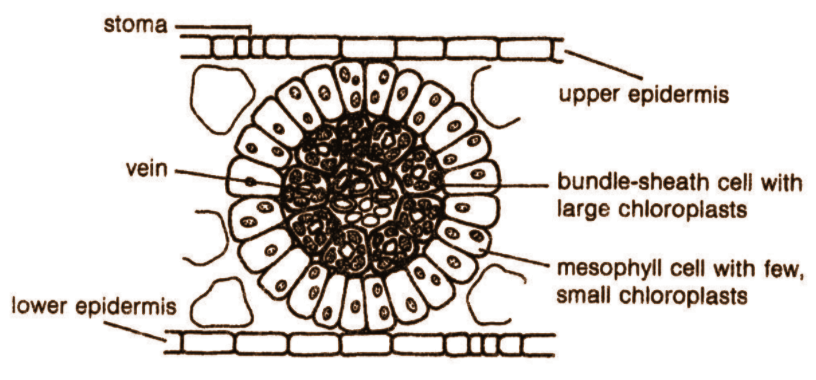Question
Question: What is Kranz anatomy? Write a note on photosynthesis of those plants in which this anatomy is found...
What is Kranz anatomy? Write a note on photosynthesis of those plants in which this anatomy is found.
Solution
The term kranz is also called wreath or ring, and it is the specialized structure in C4 plants, where the group of mesophyll cells is form clusters, around the bundle sheath cells in the form of the ring like fashion.
Complete answer:
Kranz anatomy is mainly formed in three different steps
- The Initiation of procambium occurs.
- There is a specification of the bundle sheath and mesophyll cells.
- Chloroplast development and integration of the C4 cycle
Photosynthesis in Kranz anatomy
- In these plants, light-dependent reactions occur in mesophyll cells, while dark reactions occur in bundle sheath cells.
- In the C4 plants, first, the oxygen of the atmosphere is fixed and it is converted into 4 carbon compound called oxaloacetate, which occurs by the enzyme called PEP carboxylase
- Later this oxaloacetate is converted to Malate and it enters the bundle sheaths and in bundle sheaths, malate dissociation occurs, which releases the carbon dioxide.
- Rubisco fixes the carbon dioxide, which converts to sugar
- The mesophyll cells constantly pump the carbon dioxide to the bundle sheath cells, and so carbon dioxide concentration is always high around the rubisco, which reduces photorespiration.
- The majority of the plants convert the carbon dioxide into 3 carbon compounds by the enzyme Rubisco, if this enzyme catalyses the reaction with oxygen, it induces the process of respiration.

Note: In C4 plants, in order to avoid photorespiration, the carbon dioxide is fixed in the plants, and this carbon dioxide is again released into the atmosphere for refixation again. In C4 plants like grasses, bundle sheaths, in turn, surrounded by the veins.
